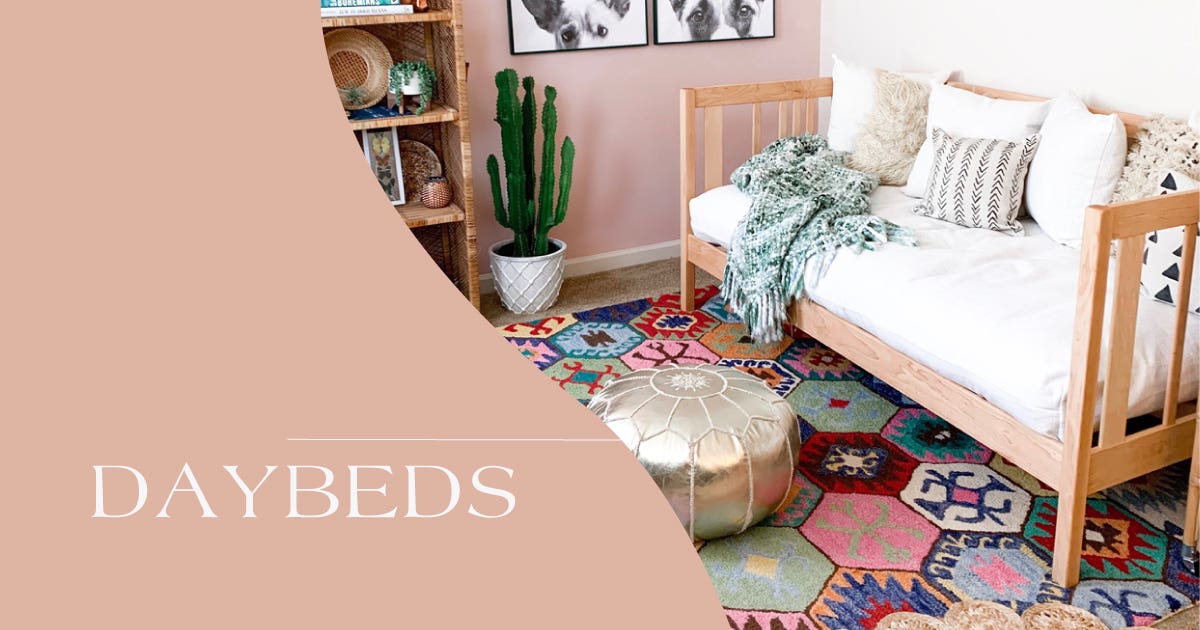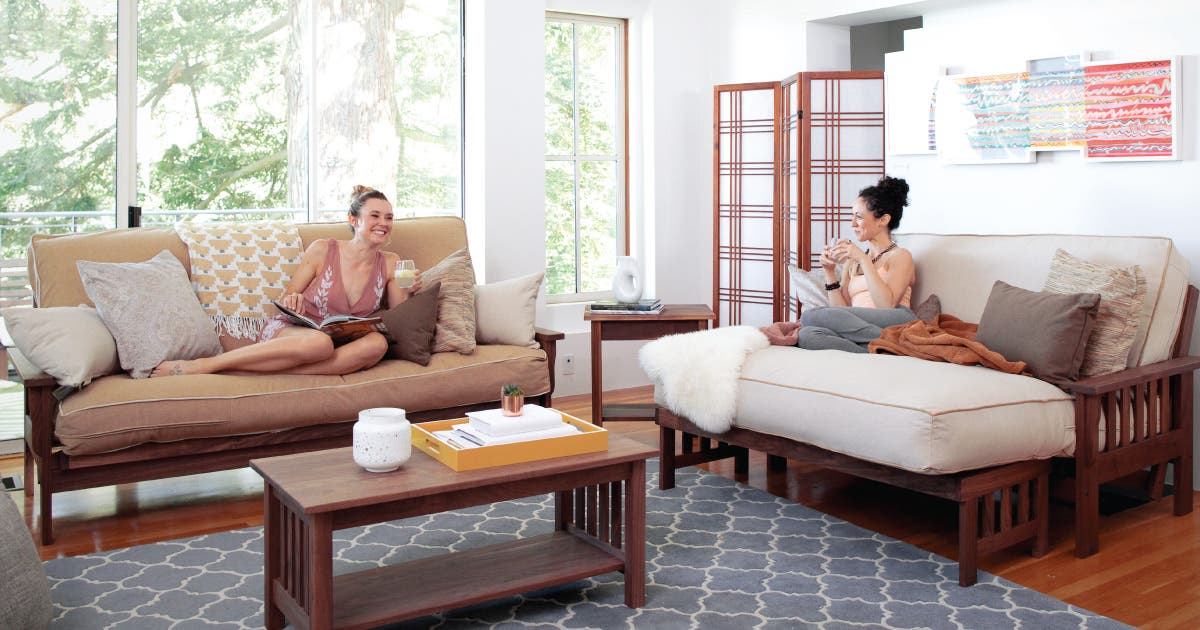
You may have heard of a daybed, but what exactly is it? At first glance, a daybed looks more like a couch that is flat and the size is generally a twin size but sometimes a full. The daybed is in the same class as a sofa bed or futon, however it does not convert from couch to bed. Unlike Sofa beds where the back of the “couch” also serves as the headboard for the bed, the back of the daybed is usually higher to accommodate decorative pillows. It is different from a futon in that a futon does not have a headboard and is constructed differently. The back of the futon is actually the mattress, which folds to form the shape of a couch. In order to be used as a bed, the futon must be converted from a couch to a bed. The mattress of a day bed acts as both the couch and the mattress without having to be folded or converted.
Everything You Need To Know About Futons
Daybeds Are Multifunctional

Daybeds are usually manufactured from wood or metal and consist of two sides or arms and a back section (for sitting). Daybeds traditionally come in twin size, however, some are available with additional trundles that are stored underneath the bed and pop up to create a sleeping surface as large as a king sized bed. In many models, the trundle is on wheels in order to make it easier to pull out from beneath the bed. It can then be popped up in order to be at the same level as the main portion of the day bed. Some daybeds have a trundle portion that can be easily connected to the main portion in order to make a king size bed. Alternatively, the trundle can be left separate in order to create two twin size beds, which will come in handy in children’s rooms during sleepovers.
Daybed Or Futon?
Some people may consider a day bed to be a more comfortable than a futon, but a daybed usually takes up more space than a futon and is a more permanent fixture in a room. In general, the day bed can be a more classical approach to serving this need, although less versatile than a sleeper sofa or a futon, as it is typically used in guest bedrooms or a home office which is doubling as a secondary bedroom rather than as a couch in the living room.













